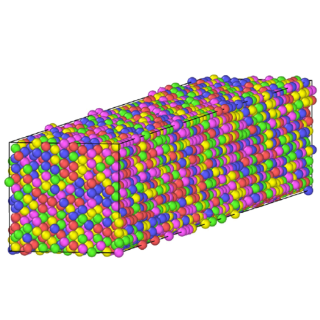
Chemically Disordered Alloys for Structural Applications
With the introduction in 2004 of the new alloy family, multi-principal element alloys (MPEAs), came the exciting potential to achieve the exceptional boosts in strength and toughness not possible with traditional alloys. MPEAs are materials comprising three or more elements in similar proportions and possessing structural but no chemical long-range order. Fascination with MPEAs has grown over the last twenty years and to date, MPEAs have opened a new materials design paradigm and horizon for discovery of materials to meet the demands of applications in aggressive environments. Understanding the fundamental mechanisms controlling their response, however, is challenging due to the chemical and structural variations that wildly fluctuate over fine atomic and nanoscales. This program focuses on the experimental, computational, and theoretical investigations that aim to uncover phenomena and processes determining the structure, kinetics, mechanics, or deformation mechanisms in MPEAs at the atomic scale. Research activities include atomic-scale modeling, dislocation theory and crystal plasticity combined with experiment testing and characterization. Our research also features a mesoscale computational modeling method called phase field dislocation dynamics (PFDD). PFDD aims to predict the 3D pathways taken by long dislocations and dislocation loops in single and multiphase crystals under stress and temperature.









